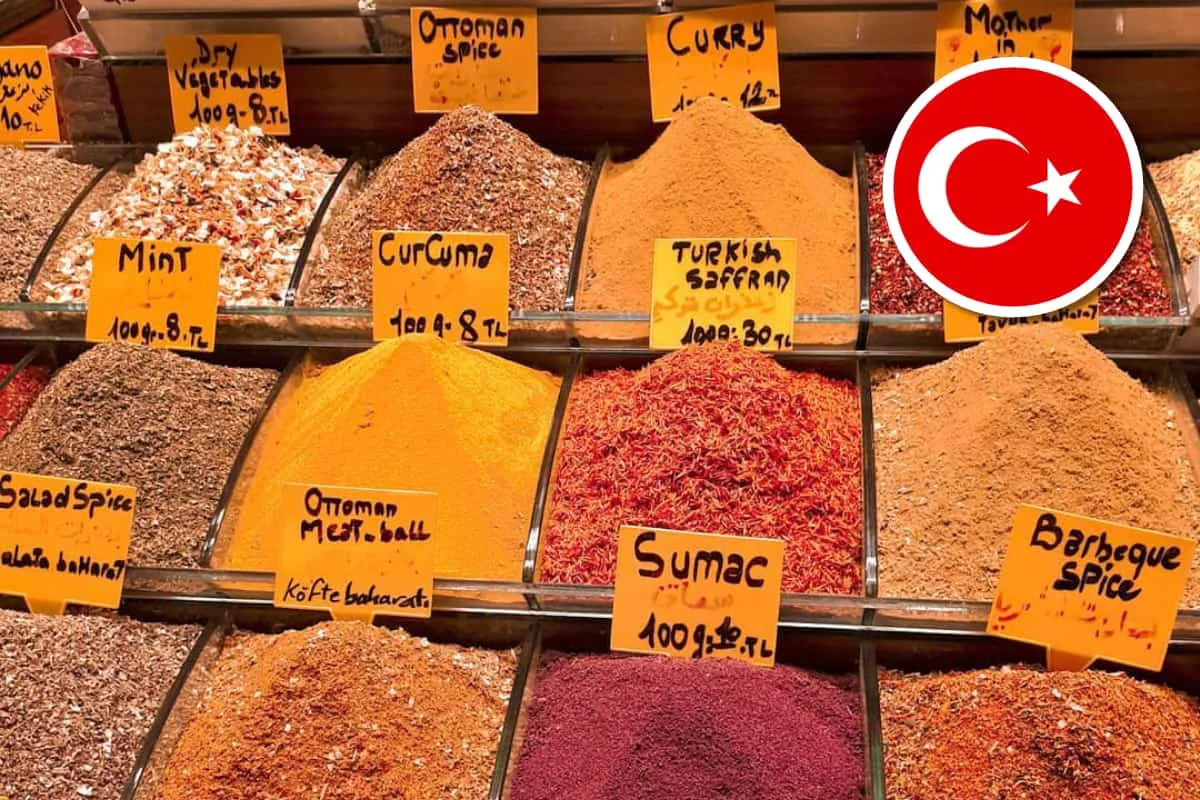
Exploring the Rich Tapestry of Turkish Spices: A Culinary Journey Through Turkey's Flavors
3 mins read 12/29/2023 Comments (0)
Turkey, a nation that is located on two continents, has a vibrant and diverse cuisine that is a reflection of its rich cultural heritage. A variety of spices that enhance the flavors of Turkish food are at the core of the country's culinary traditions. We explore the aromatic world that shapes Turkey's culinary landscape in this examination of the most widely used Turkish spices. As you set out on this culinary adventure, think about how the entrancing flavors and aromas of these spices might be impacting the kitchens and living spaces of people who are drawn to Turkey because of its real estate or its cuisine.
Sumac: This spice gives food a zesty, tangy flavor that comes from the berries of the sumac plant. Sumac, which is frequently used in salads, kebabs, and mezes, gives Turkish food a distinct zest. As you enjoy the unique flavor, picture bringing the essence of Turkish flavors into your own kitchen—possibly in a house with a view of some of the most picturesque scenery Turkey has to offer in terms of real estate.
Cumin: A mainstay in Turkish kitchens, cumin gives a variety of dishes a comforting, earthy scent. Cumin is essential to producing the bold flavors that characterize Turkish cooking, which can be found in everything from rice and meat dishes to stews and soups. Think about how adding cumin to your own cooking could improve your meals, at home or in the many restaurants that can be found all over Turkey.
Red pepper flakes: Turkish food is renowned for having strong, fiery flavors, and red pepper flakes are essential to achieving this. Red pepper flakes give food a spicy kick that arouses the senses, whether they are added to pizzas, grilled meats, or even breakfast eggs. Imagine sitting on the balcony of your ideal Turkish house, savoring a hearty Turkish breakfast while taking in the bustling streets below.
Mint: Fresh mint leaves are a popular herb in Turkish cooking, adding a cool and refreshing touch to a variety of recipes. Turkish cuisine is known for its hearty and spiced dishes, but mint is a delightful contrast that can be found in salads, yogurt-based sauces, and teas. Imagine pouring some mint oil into your own kitchen and enjoying a cup of tea while you think about the potential of Turkey real estate.
Coriander: Fresh coriander leaves and seeds are both frequently used in Turkish cuisine. Fresh leaves add a burst of freshness, and the seeds give dishes a warm, citrusy flavor. A versatile spice, coriander can be found in stews, soups, and even desserts. Think about how adding coriander to your dishes could infuse your kitchen with a hint of Turkish inspiration.
As our exploration of the colorful world of Turkish spices comes to an end, it is clear that these flavor enhancers are much more than just components; rather, they are the foundation of Turkey's illustrious culinary history. A little experimentation with these spices can take you to the vibrant markets and fragrant kitchens of Turkey, whether you're a seasoned chef or a home cook. And for those with tastes extending beyond the kitchen, Turkey's real estate market beckons with the possibility of a deeper immersion in the nation's flavors and culture. Allow the enticing flavors and aromas of Turkish spices to lead you as you explore the options, taking you beyond your plate and into the heart of Turkey's captivating landscapes.

